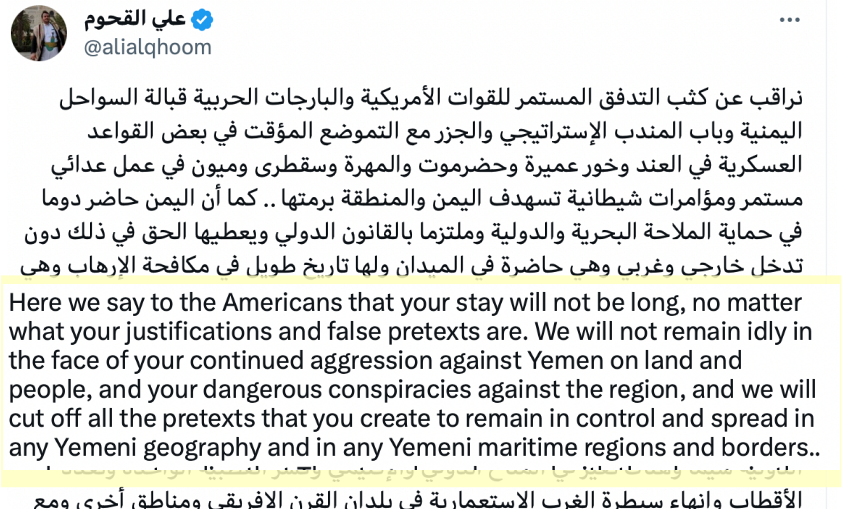Attacks in the Red Sea Likely Aimed Directly at US Navy
US provocation in the Middle East is no longer being tolerated. Bad news bears for global security.
On the 19th of October, the US government announced that the USS Carney had intercepted a series of cruise-missiles and drones fired from Yemen, "proabably" aimed at Israel. The exact number of missiles and drones that were intercepted remains unclear, with various reports contradicting the official numbers. The possible numbers range from 3-4 missiles and anywhere from 4 to 15 drones. The Carney, a destroyer that has been in use since 1996, had passed through the Suez Canal only a day prior despite intense warnings of retaliation from regional powers, specifically the Houthis in Yemen, which the US said was responsible for the attack.
The Houthis are an armed group that has been fighting against the Saudi-backed Yemeni government for years with Iranian support. While the group has taken responsibility for the attacks, the likelihood of Israel being their target is lower than official statements from the US portray. Although the Houthis have a well-documented and well-stocked arsenal of impressive and formidable proportions, the longest range missile currently available to them can travel at most 1200 miles, rather out of range for a 1500 mile trip to Israel. This and recent warnings made to the United States regarding its unwelcome presence in the Red Sea have lead to the logical conclusion that the attacks were actually targeting the US naval vessels. Such attacks aimed at US vessels were discouraged by many prominent figures in the Yemeni community, such as the one shown below made by the public figure Ali Al’Qhoom on ‘X’ in early August.
Offensive attacks aimed at the US military operations abroad cannot be simply dismissed as acts of terrorism. They differ greatly from simple religious acts of jihad in that they have a well-articulated political motivation behind them, and evidence points to the reality that these attacks were actually retaliations for US actions in the region. The US has been quietly building up its presence in the Persian Gulf for months. On August 7th, notably before Hamas attacked Israel, the USS Batan and USS Carter Hall arrived in the Red Sea carrying over 3,000 sailors and marines. This can only be perceived as provocative attempts by the US to establish a hegemonic control.
The Houthi-controlled port of Hodeidah is the main port through which aid is delivered to the Yemeni people, a key factor for the group as it aims to fend off US military interference that would almost certainly inhibit navigation. This is of course an attack not on the local government, but on the Yemeni citizens, providing all the justification needed to launch offensives at US military targets. The attacks on the US military presence in the region are no longer a question of if, but when.
This is part of the larger geopolitical agenda of the US in the region, which focuses on limiting the influence of Iran and Russia through proxy wars in countries such as Yemen and Syria. This has led to heightened tensions and an arms race in the region, and now with the escalation between Israel and Palestine we can safely infer that these divisions have the likely potential to escalate into open warfare.
-The Shultz Report by M. Shultz





